BRAKE LINES, INSPECTION
| BRAKE LINES, INSPECTION |
| BRAKE LINE |
Check scratches, swelling, corrosion, traces of fluid leakage on the brake hoses or pipe joints.
Check the possibility of adjacent parts interfering with brake pipes/hoses during driving, and loose connections/clamps.
Check any trace of fluid leakage, scratches, etc. on the master cylinder, wheel cylinder and pressure control valve.
| Note | ||
| • |
When the brake fluid level in the reservoir tank is lower
than the specified limit, the brake fluid warning light on the combination
meter will come on.
|
|
| • |
Visually check the brake hose (using a mirror where
it is difficult to see) for any damage.
|
|
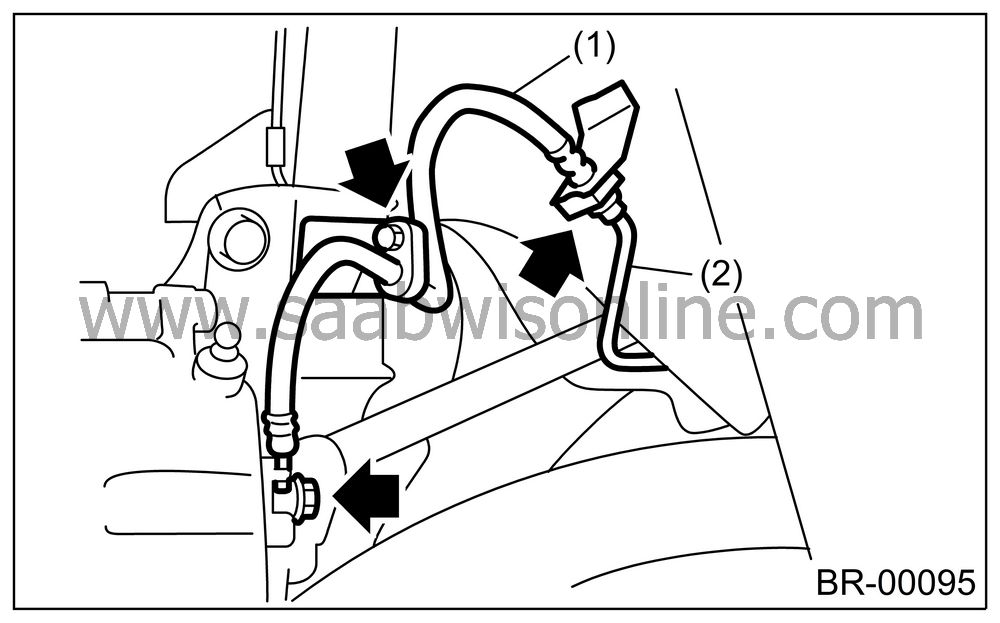
|
(1)
|
Front brake
hose
|
|
(2)
|
Front brake
pipe
|
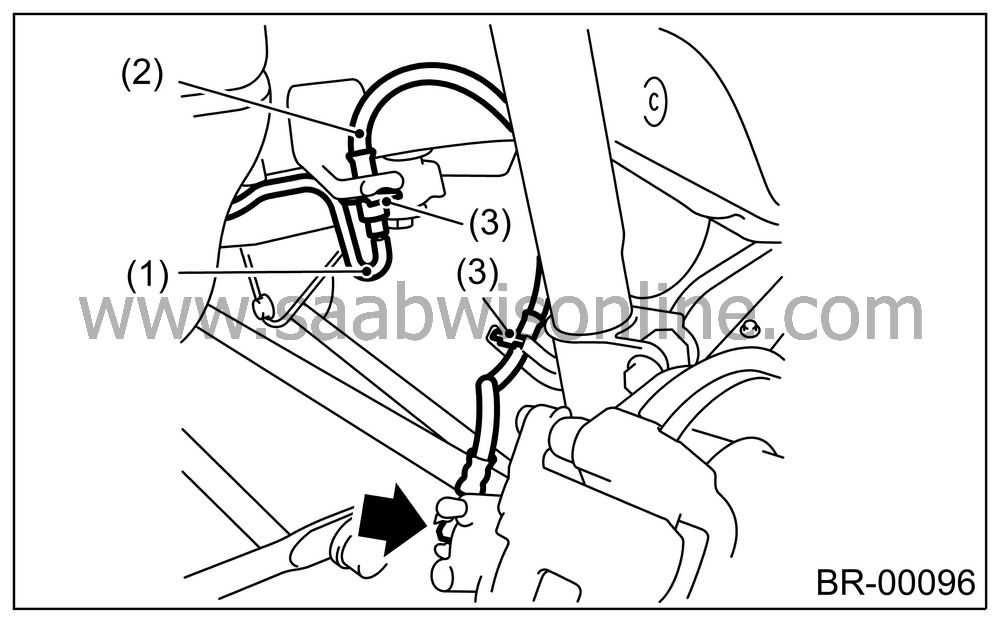
|
(1)
|
Rear brake
pipe
|
|
(2)
|
Brake hose
|
|
(3)
|
Clamp
|
| SERVICE BRAKE |
Check the free play of brake pedal with a force of less than 10 N (1 kgf, 2 lb).
Brake pedal free play:
0.5 — 2.0 mm (0.02 — 0.08 in)
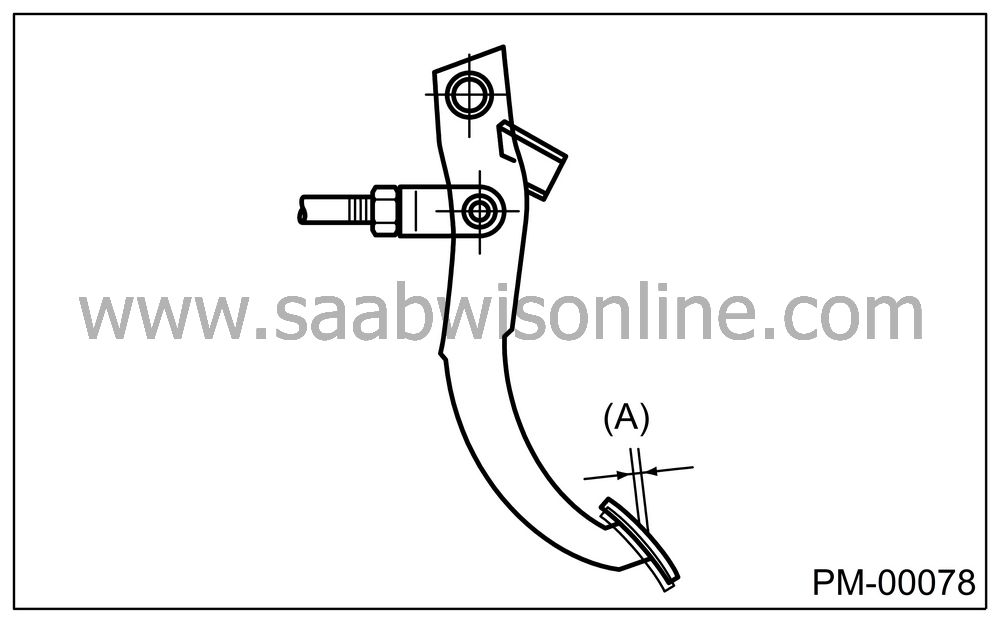
|
(A)
|
Brake pedal
free play
|
If the free play is out of specifications above, adjust the brake pedal as follows:
Be sure the engine is off. (No vacuum is applied to brake booster.)
There should be play between brake booster clevis and pin at brake pedal installing portion.
[Depress brake pedal pad with a force of less than 10 N (1 kgf, 2 lb) to a stroke of 0.5 to 2.0 mm (0.02 to 0.08 in).]
Depress the surface of brake pad by hand.
If there is no free play between clevis pin and clevis, turn the brake switch adjusting nut until the clearance between stopper and screw of brake switch becomes 0.3 mm (0.012 in).
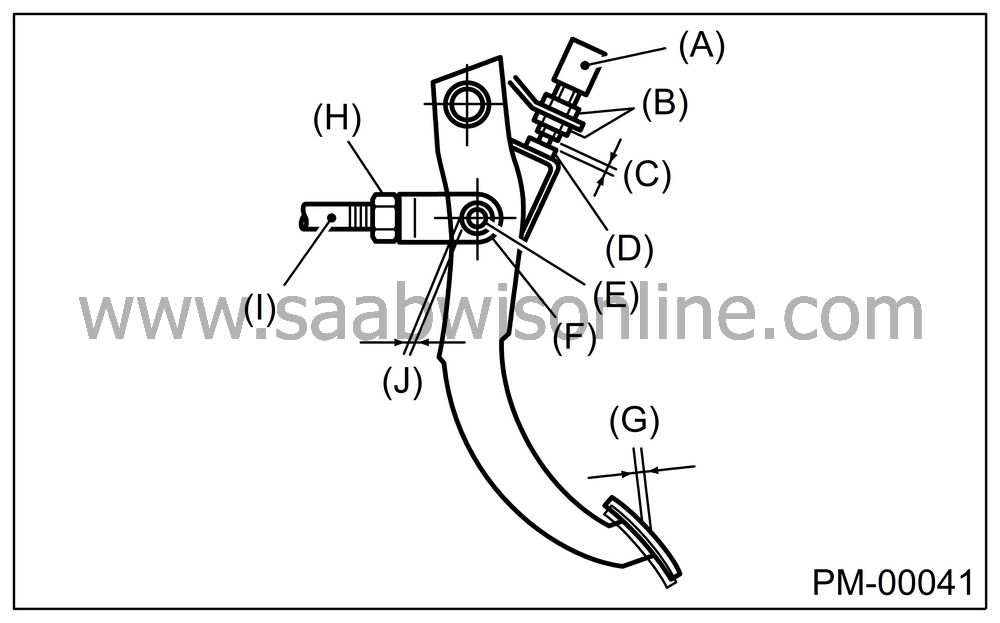
|
(A)
|
Brake switch
|
|
(B)
|
Adjusting
nut
|
|
(C)
|
0.3 mm
(0.012 in)
|
|
(D)
|
Stopper
|
|
(E)
|
Clevis
pin
|
|
(F)
|
Clevis
|
|
(G)
|
Brake pedal
free play
|
|
(H)
|
Lock nut
|
|
(I)
|
Brake booster
operating rod
|
|
(J)
|
Play at
pin
|
Check the pedal stroke.
While the engine is idling, depress the brake pedal with a 490 N (50 kgf, 110 lb) load and measure the distance between brake pedal and steering wheel. With the brake pedal released, measure the distance between pedal and steering wheel again. The difference between the two measurements must be less than specified value. If the distance is more than specified, there is possibility of air inside the hydraulic unit.
Brake pedal reserve distance A:
Saab 9-2X 2.0T Aero AT model
105 mm (4.13 in) / 490 N (50 kgf, 110 lb) or lessExcept Saab 9-2X 2.0T Aero AT model
90 mm (3.54 in) / 490 N (50 kgf, 110 lb) or less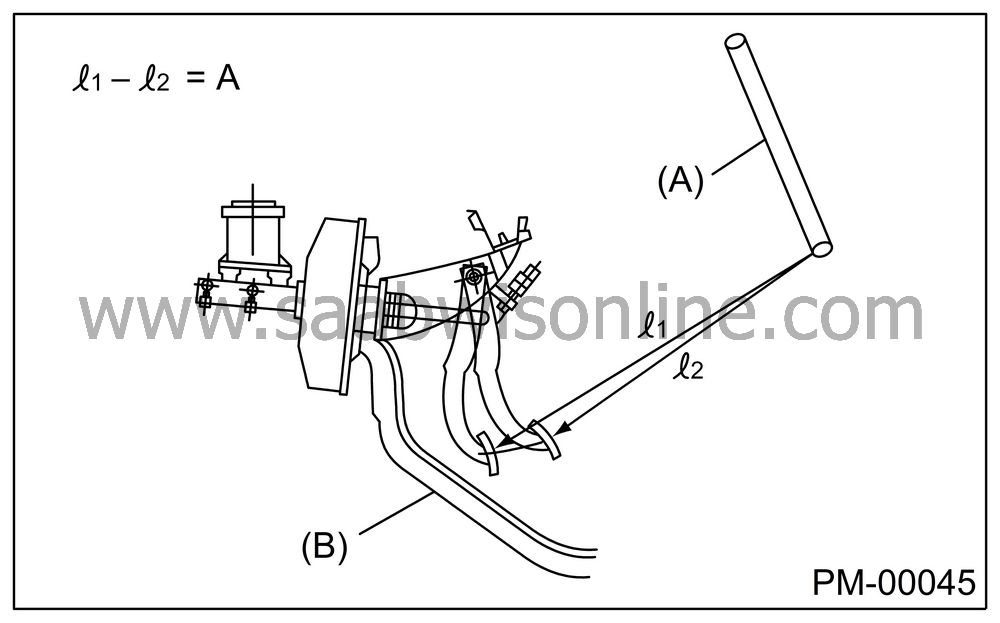
|
(A)
|
Steering
wheel
|
|
(B)
|
Toe board
|
Check to see if air is in the hydraulic brake line by the feel of pedal operation. If air appears to exist in the line, bleed it from the system.
Check for even operation of all brakes, using a brake tester or by driving the vehicle for a short distance on a straight road.
| BRAKE SERVO SYSTEM |
With the engine off, depress the brake pedal several times applying the same pedal force: Make sure the travel distance should not change.
With the brake pedal depressed, start the engine: Make sure the pedal should move slightly toward the floor.
With the brake pedal depressed, stop the engine and keep the pedal depressed for 30 seconds: Make sure the pedal height should not change.
Check valve is built into the vacuum hose. Disconnect the vacuum hose to inspect function of check valve.
Blow air into the vacuum hose from its brake booster side end: Air must flow out of engine side end of hose. Next blow air into the hose from engine side: Air should not flow out of hose.
Replace both check valve and vacuum hose if the check valve is faulty. Engine side of vacuum hose is indicated by marking “ENG” as shown.
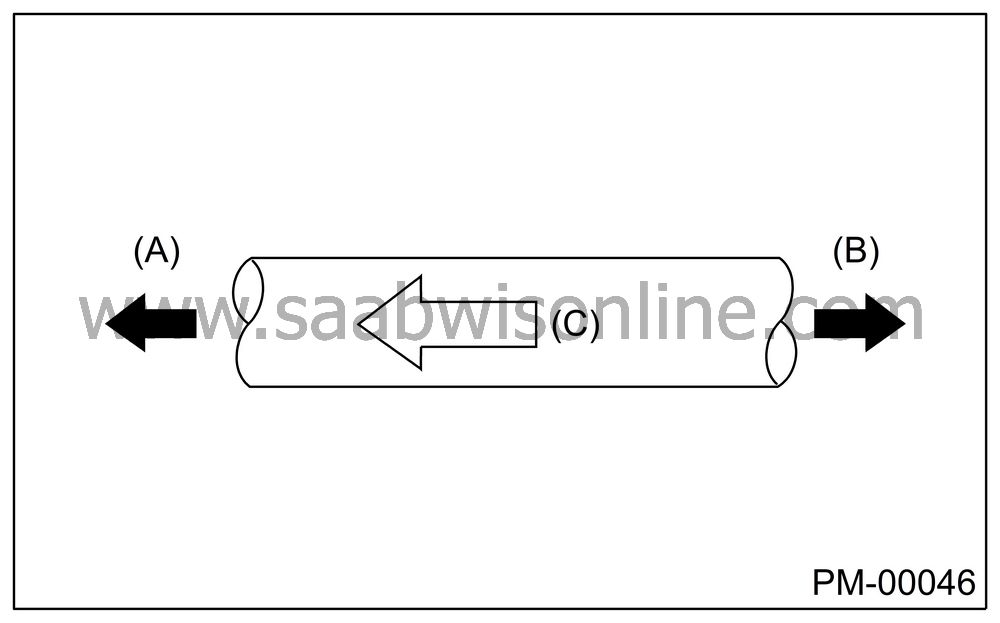
|
(A)
|
Engine
side
|
|
(B)
|
Brake booster
side
|
|
(C)
|
ENG
|
Check the vacuum hose for cracks or other damage.
| Note | ||
|
When installing the vacuum hose on the engine and brake booster, do not use soapy water or lubricating oil on their connections. |
Check vacuum hose to make sure it is tight and secure.


